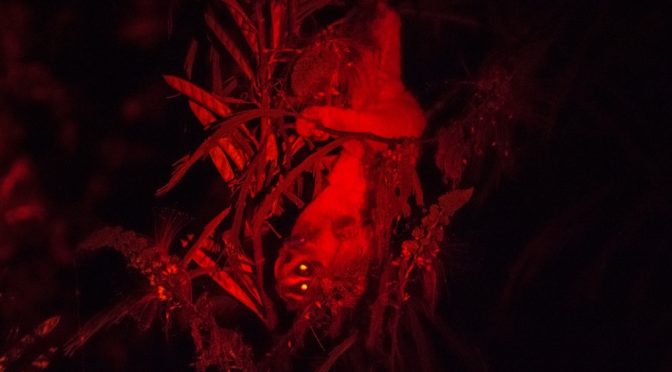To get some inspiration for our slow loris rehabilitation centre in North Sumatra, we visited different slow loris stations and projects in Southeast Asia. I was looking forward to observing the behavior of wild slow lorises at the Little Fireface Project. On my first night in the field, we observed slow loris Acil, who could not get enough from the nectar of the Red Calliandra. I tried out the sweet nectar of the Calliandra flowers and eating this lovely nectar is a predilection, that Acil and I share now.
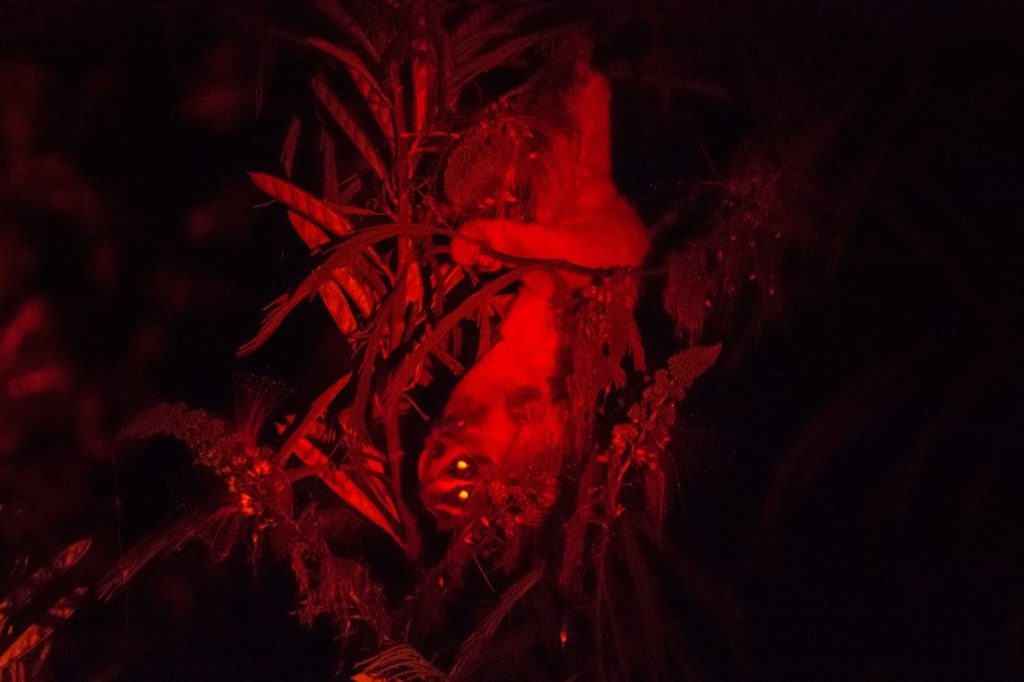
My first night of observation – sleeping site
Together with Marco, I left at 5 pm on my first day to find slow loris Acil. Like the other slow lorises, that are observed by the Little Fireface Project in Cipaganti, Acil wears a radio collar, to locate him. It did not take long before we found Acil in a bamboo thicket on the edge of the village. High above, the slow loris was sleeping but soon has been alerted to our presence. A little sleepy, he looked down from his sleeping place to us, while we made ourselves comfortable on the edge of a field. Here we waited for the nightfall, that we could follow the nocturnal primate.
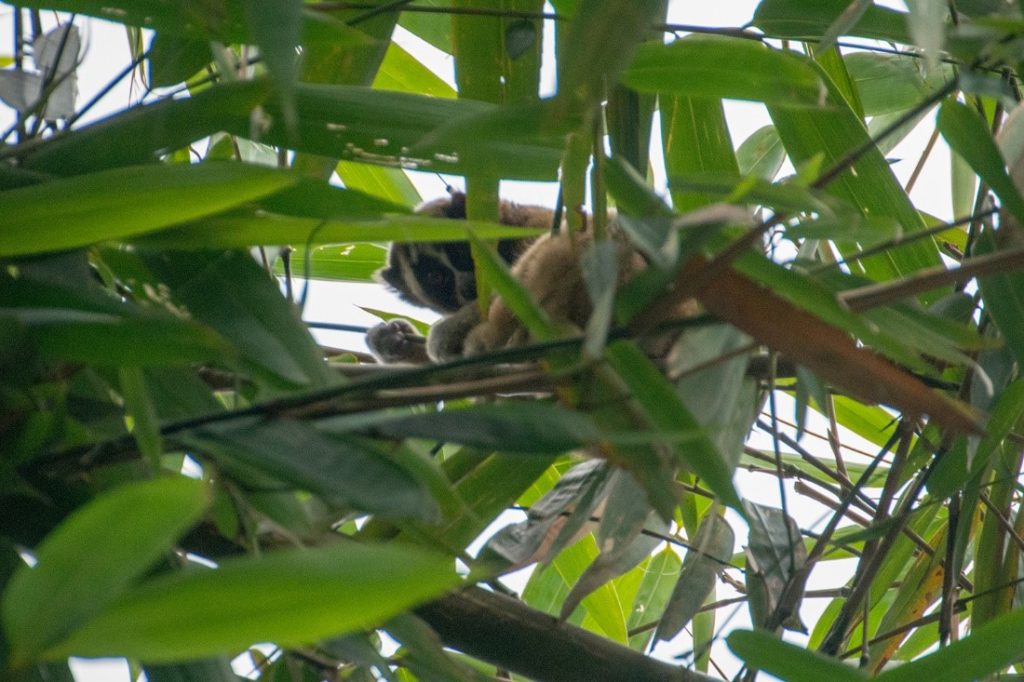
My first night of observation – beginning of the activity
At the start of twilight, Acil started becoming active and disappeared out of sight in the thickets of the bamboo. Soon after, he left the bamboo and moved away. We tracked the slow loris without seeing him. But moments later, on the edge of an open area, we met Acil again. He was licking nectar from the flowers of a Red Calliandra and moved from one flower to the next.
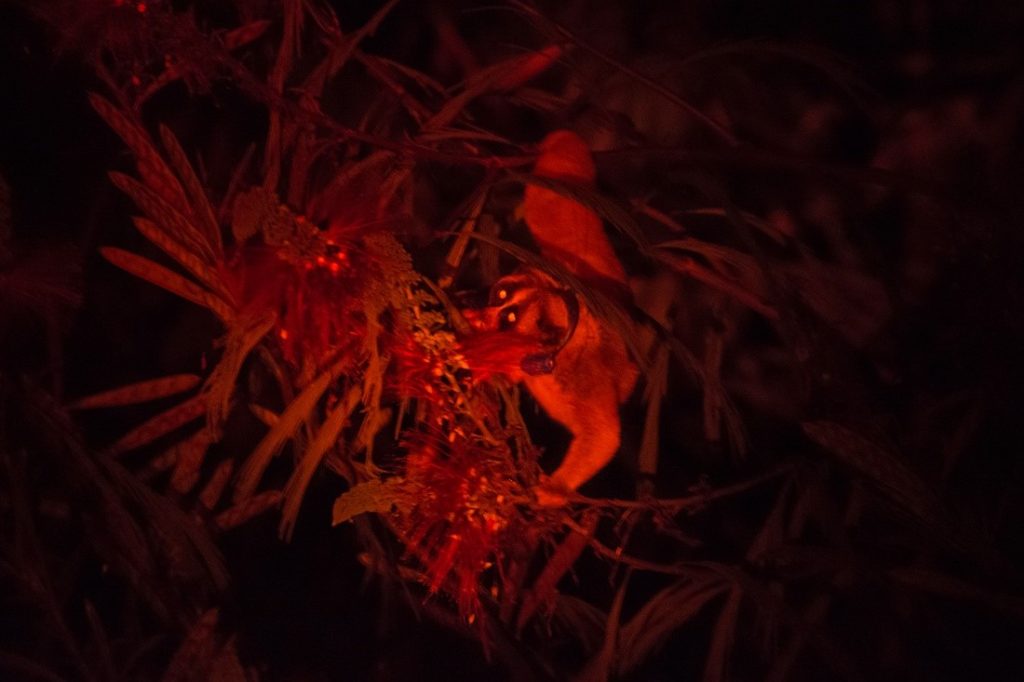
My first night of observation – my experience with Calliandra
Acil spent a long time in the tree eating a lot of nectar that he licked from the flowers. After a while, the slow loris climbed up a tree, where we could not see him very well. I took the opportunity to look at the Calliandra. There were some of the flowers I could reach from the ground. I discovered a drop of nectar in the first flower, which I picked up with my finger and eat. Now I understood why Acil spent so much time here in the Calliandra. The nectar tasted excellent – sweet and a little bit like caramel. I searched for more nectar drops in the flowers before Marco signaled that Acil was moving on.
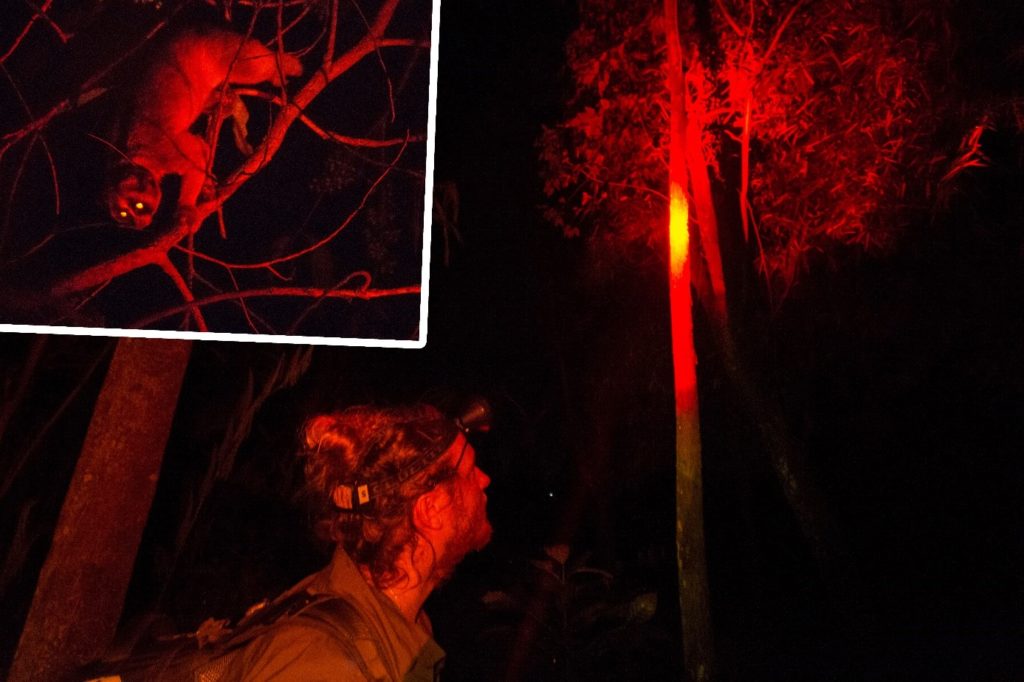
My first night of observation – end of the shift
We followed Acil, who made a small circle over the trees and then returned to the group of Calliandra trees. Here he continued eating nectar, as well as a rat, I saw at a flower, too. Finally, around 11 pm, Acil climbed into thicket where he rested. We stopped the observation for this evening and returned to the house.
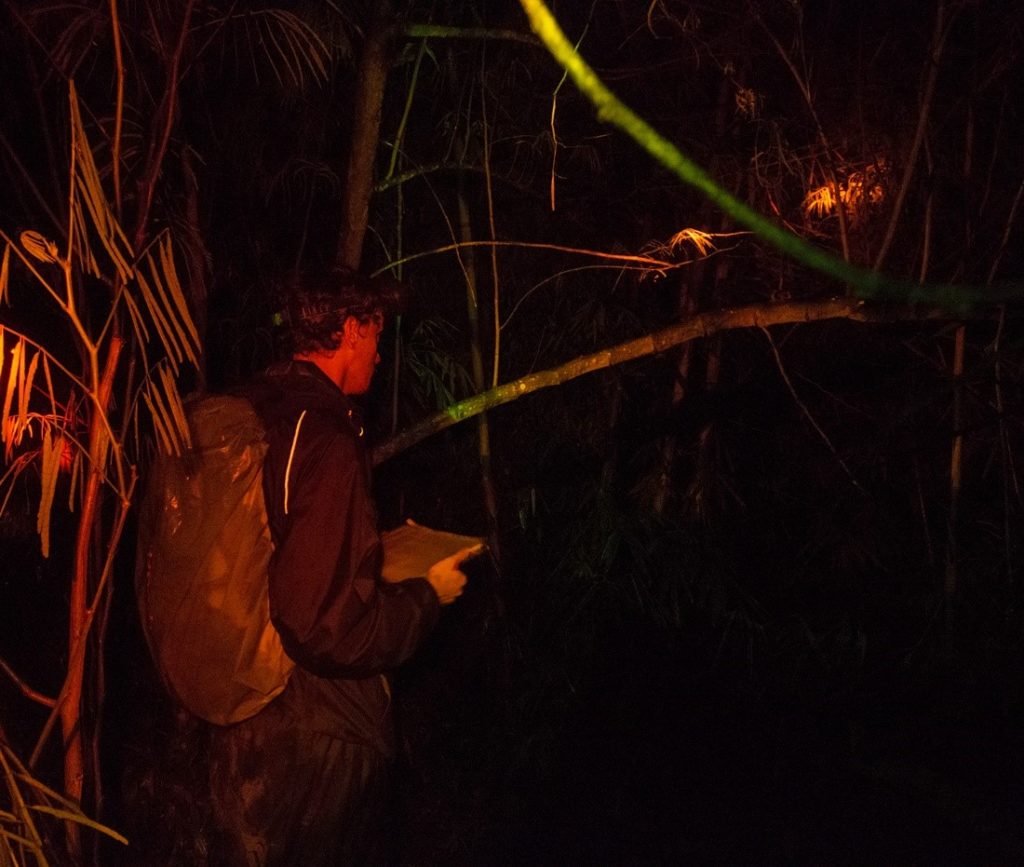
My second night of observation – insect hunting
The next evening Marco and I observed the female slow loris Ombe. We detected Ombe in a bamboo thicket just before dusk and observed her until midnight. Ombe was hunting insects during the whole time. Extremely slowly, in slow motion, she climbed through the bamboo thicket and looked for insects.
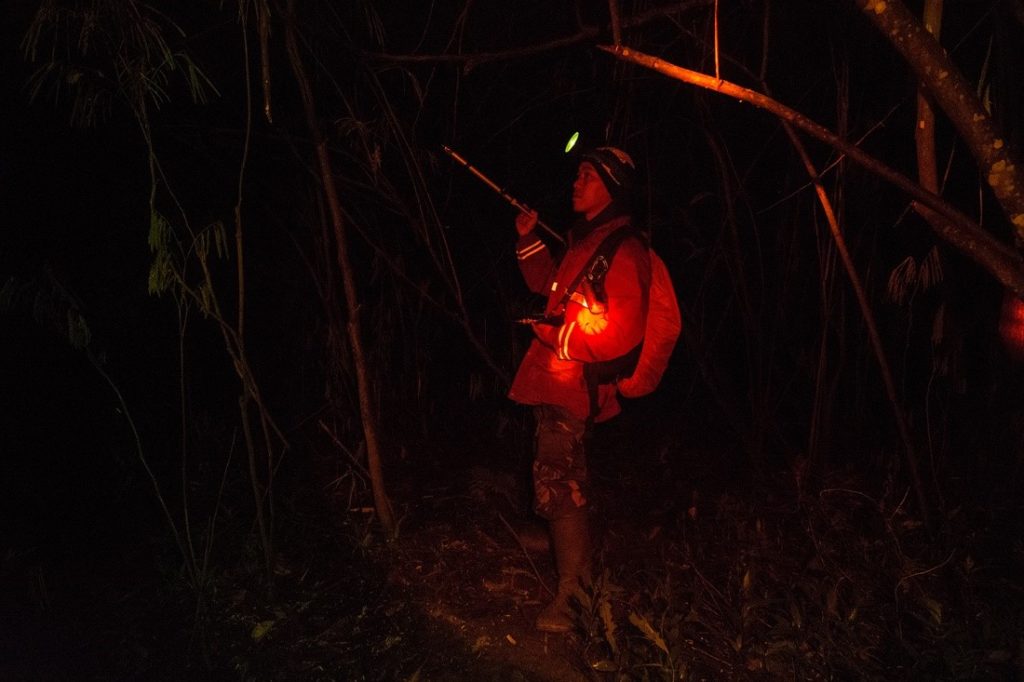
My second night of observation – stick insect
Because of the thicket, observations were a bit more difficult that day. And even though a stick insect climbed on my arm, that evening I did not want to try the slow loris food, like I the day before.
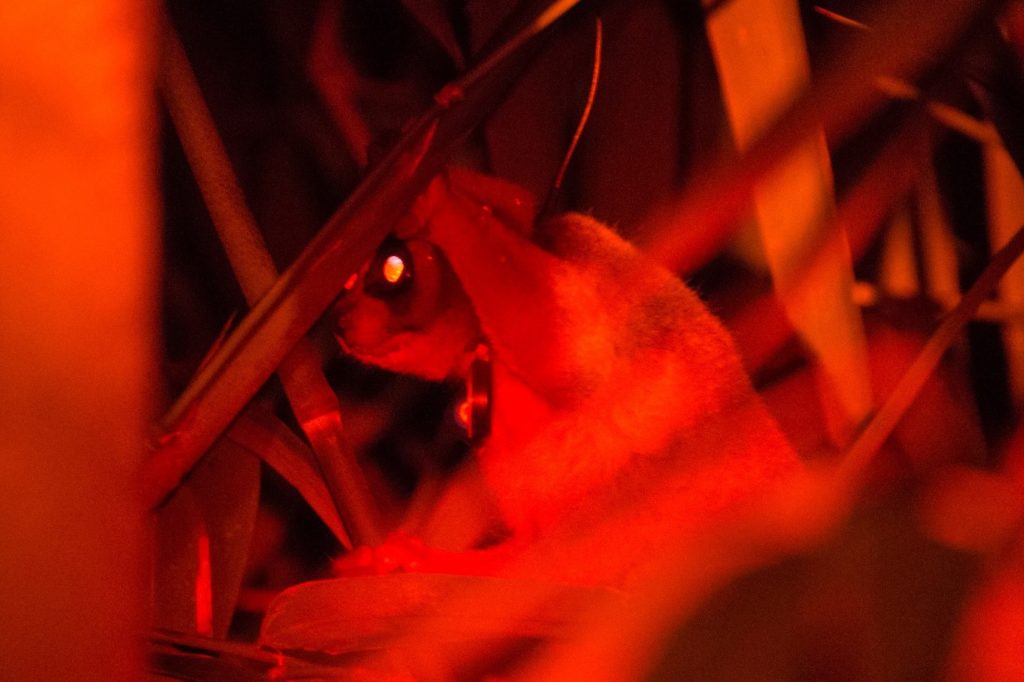
See you soon LFP
Sadly, after two nights in the field, I had to journey on. I would have liked to stay longer at the Little Fireface Project, to go even more often in the field. Although I was only able to observe slow lorises for two nights, it was interesting for me. I work with slow lorises in the Zoo Dortmund and in our rehabilitation center in North Sumatra and I always try to adapt the natural behaviour of the slow lorises for the way we take care of them.
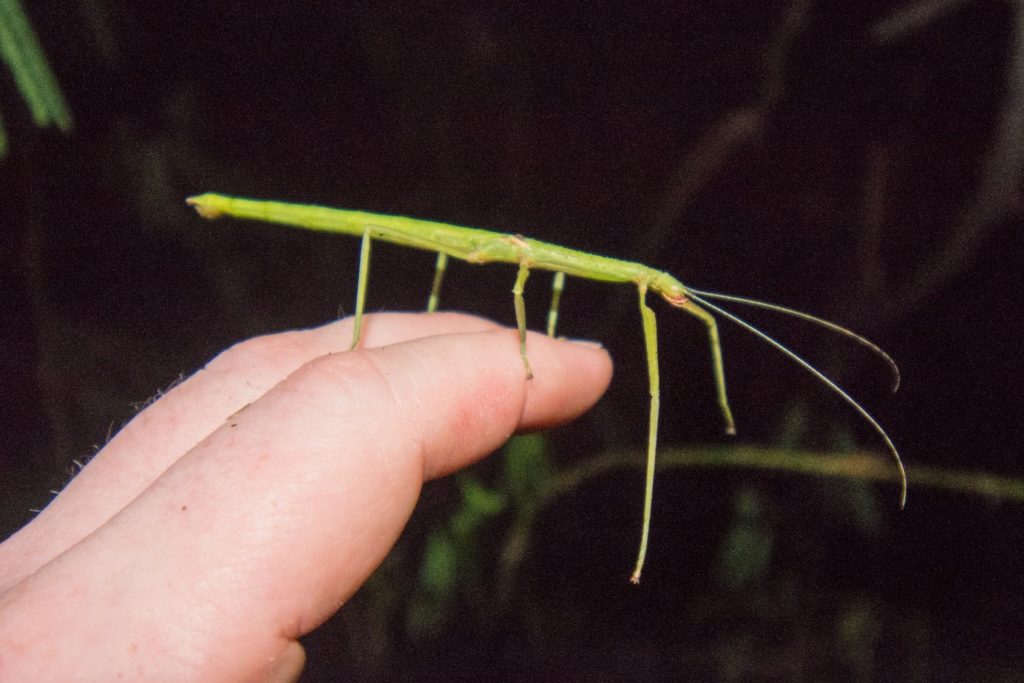
MARCEL STAWINOGA – PLUMPLORIS

